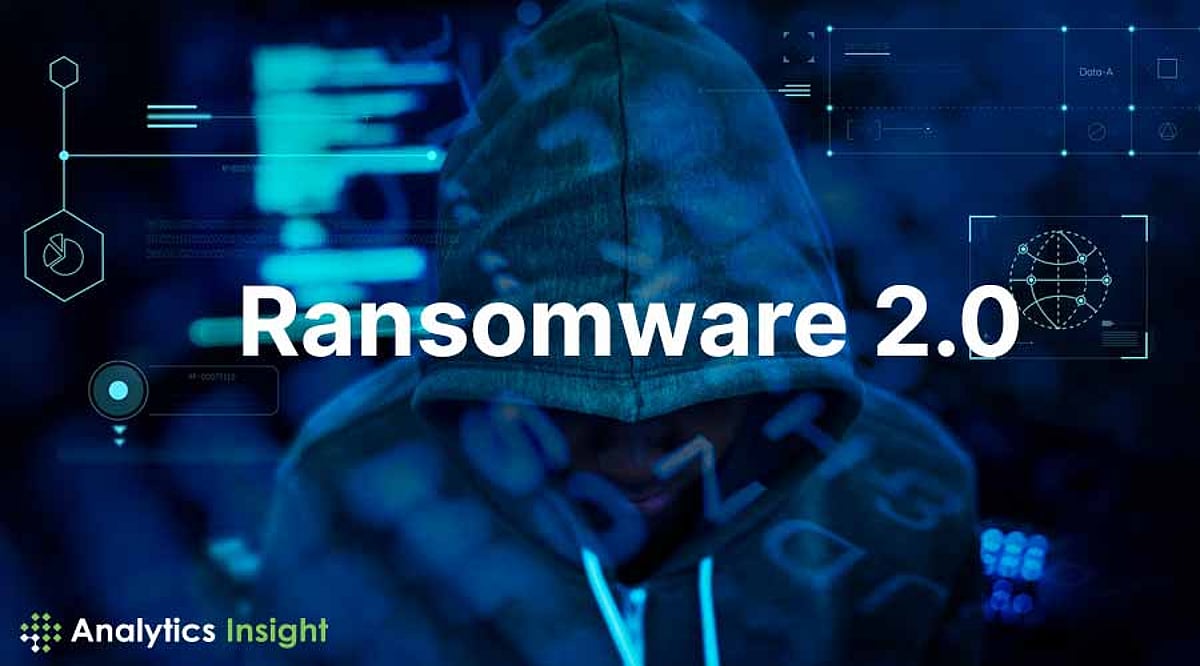Ransomware 2.0: How AI-Driven Extortion Tactics Are Evolving
The evolution of ransomware tactics is explored in the latest trend of AI-driven extortion techniques. This new wave of attacks is more sophisticated and harder to detect, making it a growing concern for cybersecurity experts. Criminals are leveraging AI technology to enhance their methods and demand larger payments from victims. Companies and individuals are urged to strengthen their cybersecurity measures to protect against these evolving threats.

Ransomware has entered a new era powered by artificial intelligence. Traditional attacks relied on encrypting files and demanding ransom, but AI-driven ransomware takes extortion to another level. Multi-layered strategies, automated attacks, and AI-enhanced reconnaissance make these threats more dangerous than ever.
Double Extortion and Triple Extortion
Instead of just locking files, cybercriminals have started stealing sensitive data before encrypting it for extortion purposes. This form of extortion is called double extortion, and as the name suggests, it lays pressure on organizations to pay the ransom by threatening the exposure of the information outside. Some have even stopped encrypting data altogether and concentrate completely on pure data monetization, where the victim's data are only stolen. Triple extortion, in addition to affecting victims, adds one more dimension: it uses customers, partners, or supply chains to cause impacts.
New Tactics and Techniques
Ransomware attackers have modified their means of launching attacks, using techniques such as distributed denial-of-service (DDoS) attacks and long-duration system downtimes to increase pressure on victims to comply with ransom demands. AI is also being used to automate vulnerability assessments, allowing attackers to target highly tailored intrusions that are less likely to be detected before the execution of payload delivery.
Social Engineering and AI Manipulation
Attackers are exploiting AI-powered social engineering techniques, including deepfake audio and hyper-personalized phishing campaigns, to manipulate employees into granting access. They are also using AI tools to generate convincing fake emails, impersonate executives, and synthesize human-like voices to deceive victims. This high-fidelity method of perpetuating phishing attacks makes it difficult for employees to distinguish legitimate communication from fraudulent ones.
Ransomware-as-a-Service (RaaS)
Ransomware-as-a-Service (RaaS) has made attacks easier for poorly trained hackers who can purchase off-the-shelf ransomware kits. This decentralized cybercriminal ecosystem has led to a significant increase in ransomware incidents, with attacks becoming more advanced and international in scope.
Financial Threats and Economic Manipulation
Some ransomware groups are targeting publicly traded companies to threaten the release of breach information, potentially impacting stock prices and allowing for malicious activities like short selling. This financial warfare aspect of ransomware highlights the broader implications beyond cybersecurity.
Defense Strategies
Organizations should take a proactive approach to defend against AI ransomware by implementing enhanced security frameworks, using AI-based detection systems, providing regular cybersecurity training to employees, and backing up databases frequently. Tools utilizing AI can help detect anomalous behavior and predict attack patterns before they fully develop. Adopting a zero-trust security model and staying informed about evolving threats are crucial in preventing ransomware attacks.
Regulatory Measures
Governments are tightening regulations to mandate stricter reporting requirements and legal measures against ransom payments to reshape how organizations respond to attacks. While authorities worldwide are implementing laws to prevent cover-ups and potentially ban ransom payments, ethical questions arise regarding the impact on business survival.
Future Challenges and Preparedness
As AI reshapes ransomware tactics, businesses must stay ahead by adopting stronger cybersecurity measures to prevent falling victim to evolving threats. Cybersecurity professionals must leverage AI-driven countermeasures to detect, prevent, and neutralize threats before they cause damage. Staying informed and prepared is crucial in the ongoing battle against the rising tide of AI-driven ransomware.

